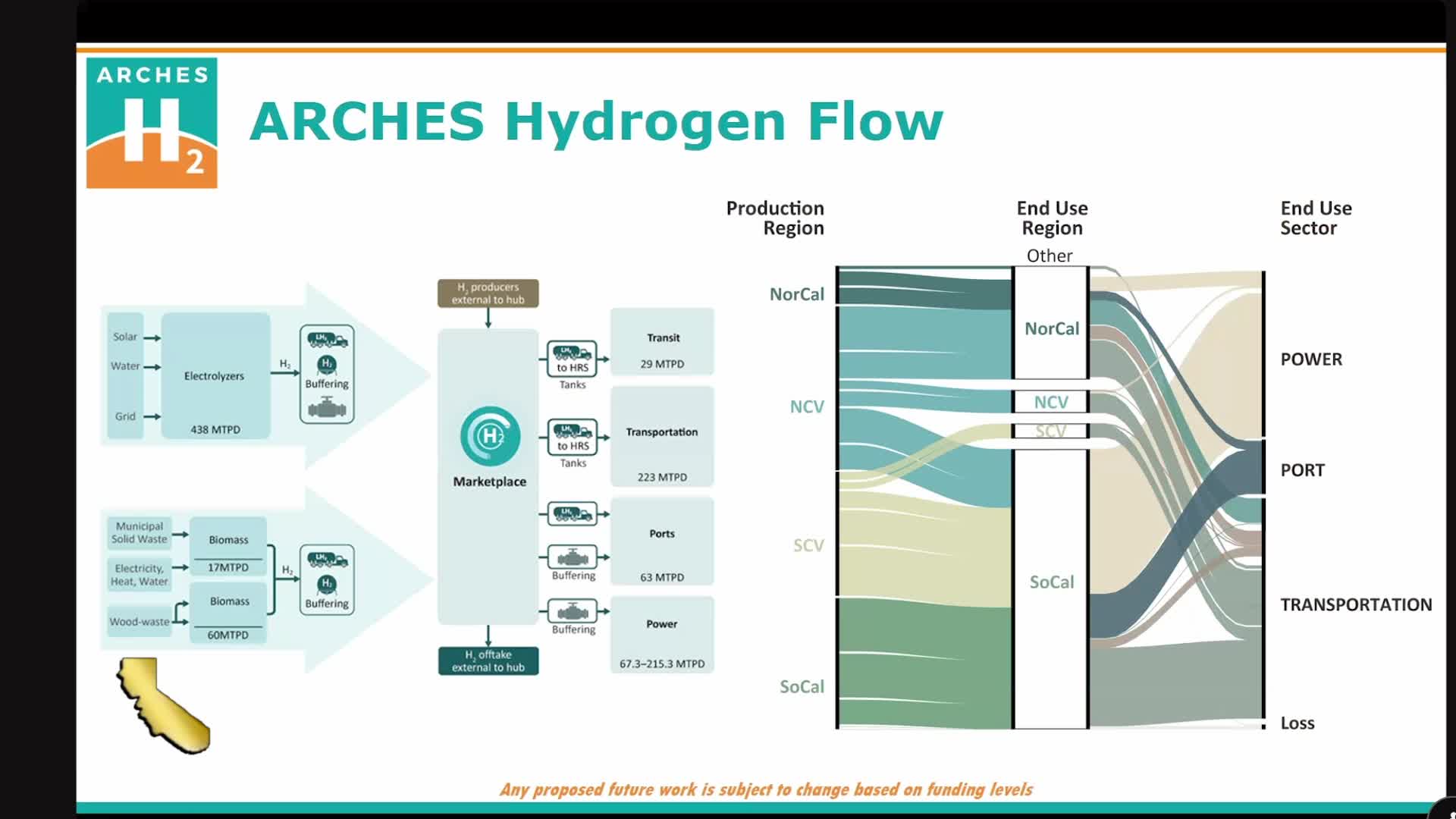Power plant project aims to revolutionize hydrogen production
August 06, 2024 | California State Assembly, House, Legislative, California

This article was created by AI summarizing key points discussed. AI makes mistakes, so for full details and context, please refer to the video of the full meeting. Please report any errors so we can fix them. Report an error »

In a recent government meeting, discussions centered on the development of hydrogen production and its integration into the energy market, highlighting the potential for a robust and resilient hydrogen ecosystem in the state. Key speakers emphasized the importance of establishing multiple hydrogen production sites that would feed into the marketplace, ensuring price certainty for offtake projects and informing workforce development needs.
Paul Habib, a scientist from Lawrence Berkeley Lab, underscored the significance of lifecycle assessments in understanding the benefits of hydrogen projects. He advocated for removing barriers to enable the establishment of a comprehensive hydrogen ecosystem, which he believes would benefit both the state and its residents.
Randy Howard, General Manager at Northern California Power Agency, shared insights on their existing power plant in Lodi, which is equipped to blend hydrogen into its operations. He highlighted the necessity of building electrolyzers and storage capabilities to produce hydrogen from excess renewable energy. Howard pointed out that the utility sector faces challenges with excess and curtailed renewables, emphasizing the need to utilize this surplus to generate hydrogen, particularly during periods when power plants are not operational.
Both speakers stressed the critical role of hydrogen in decarbonizing the energy grid, with Howard noting the importance of maintaining spinning machines in the energy mix to ensure stability. The discussions reflect a growing commitment to hydrogen as a key component in the transition to a sustainable energy future, with a focus on leveraging existing infrastructure and resources to achieve zero-emission goals.
Paul Habib, a scientist from Lawrence Berkeley Lab, underscored the significance of lifecycle assessments in understanding the benefits of hydrogen projects. He advocated for removing barriers to enable the establishment of a comprehensive hydrogen ecosystem, which he believes would benefit both the state and its residents.
Randy Howard, General Manager at Northern California Power Agency, shared insights on their existing power plant in Lodi, which is equipped to blend hydrogen into its operations. He highlighted the necessity of building electrolyzers and storage capabilities to produce hydrogen from excess renewable energy. Howard pointed out that the utility sector faces challenges with excess and curtailed renewables, emphasizing the need to utilize this surplus to generate hydrogen, particularly during periods when power plants are not operational.
Both speakers stressed the critical role of hydrogen in decarbonizing the energy grid, with Howard noting the importance of maintaining spinning machines in the energy mix to ensure stability. The discussions reflect a growing commitment to hydrogen as a key component in the transition to a sustainable energy future, with a focus on leveraging existing infrastructure and resources to achieve zero-emission goals.
View full meeting
This article is based on a recent meeting—watch the full video and explore the complete transcript for deeper insights into the discussion.
View full meeting
